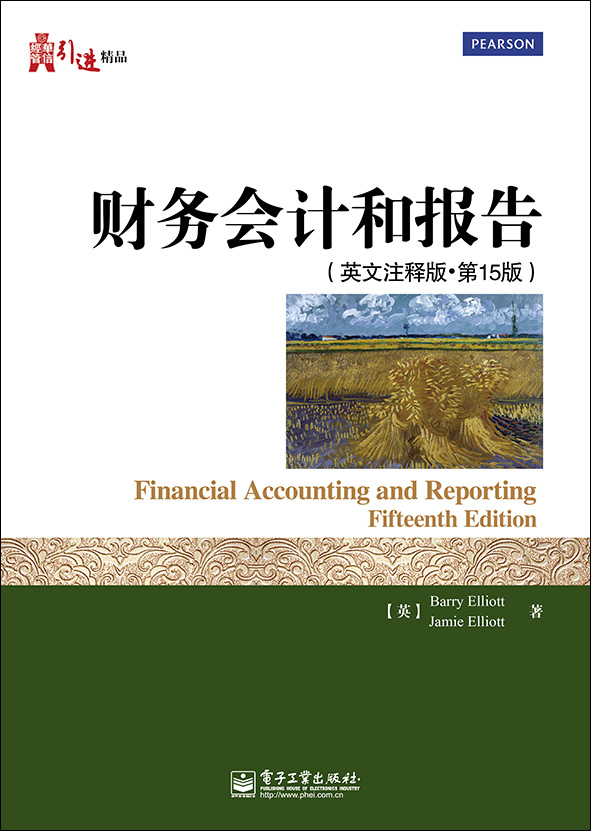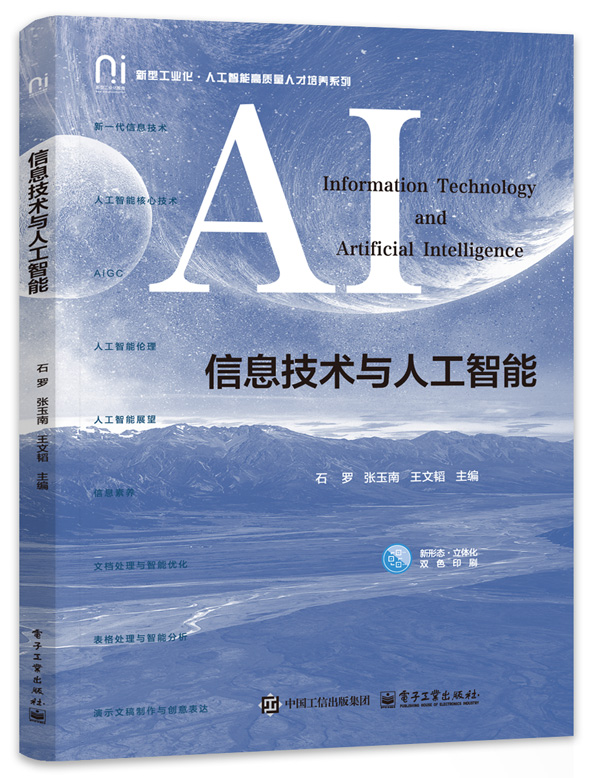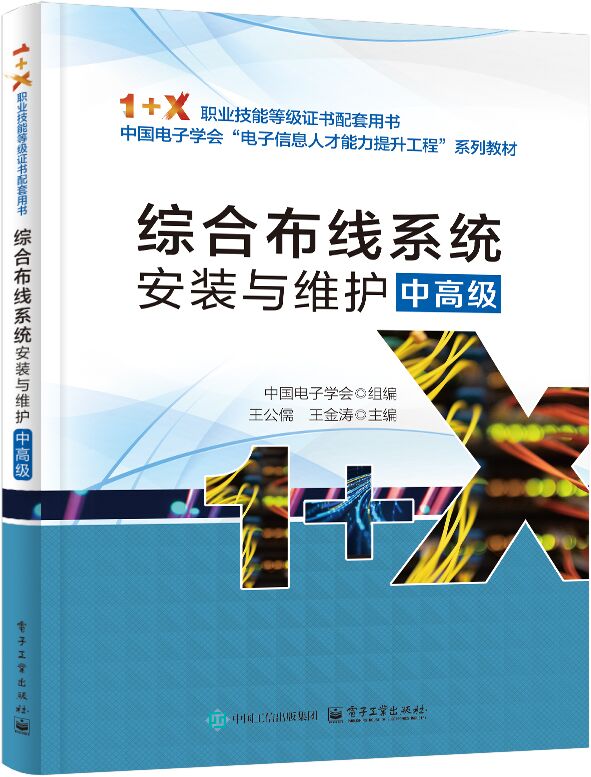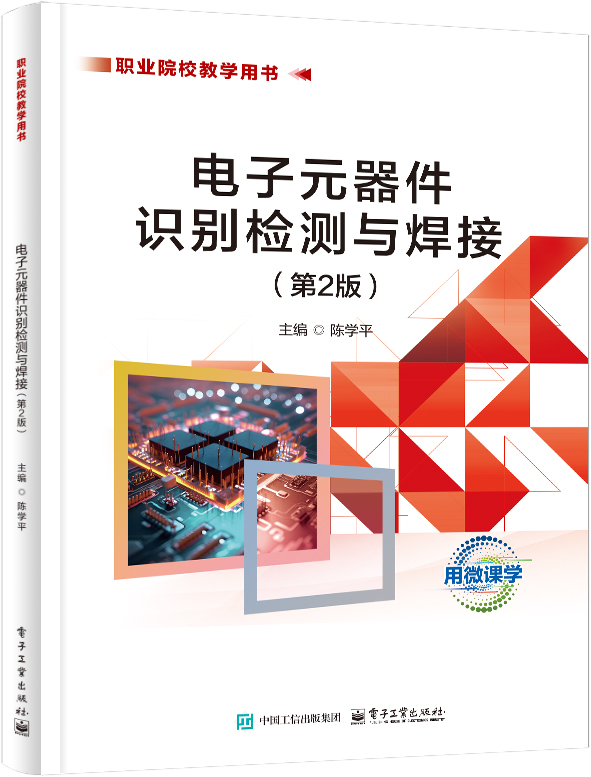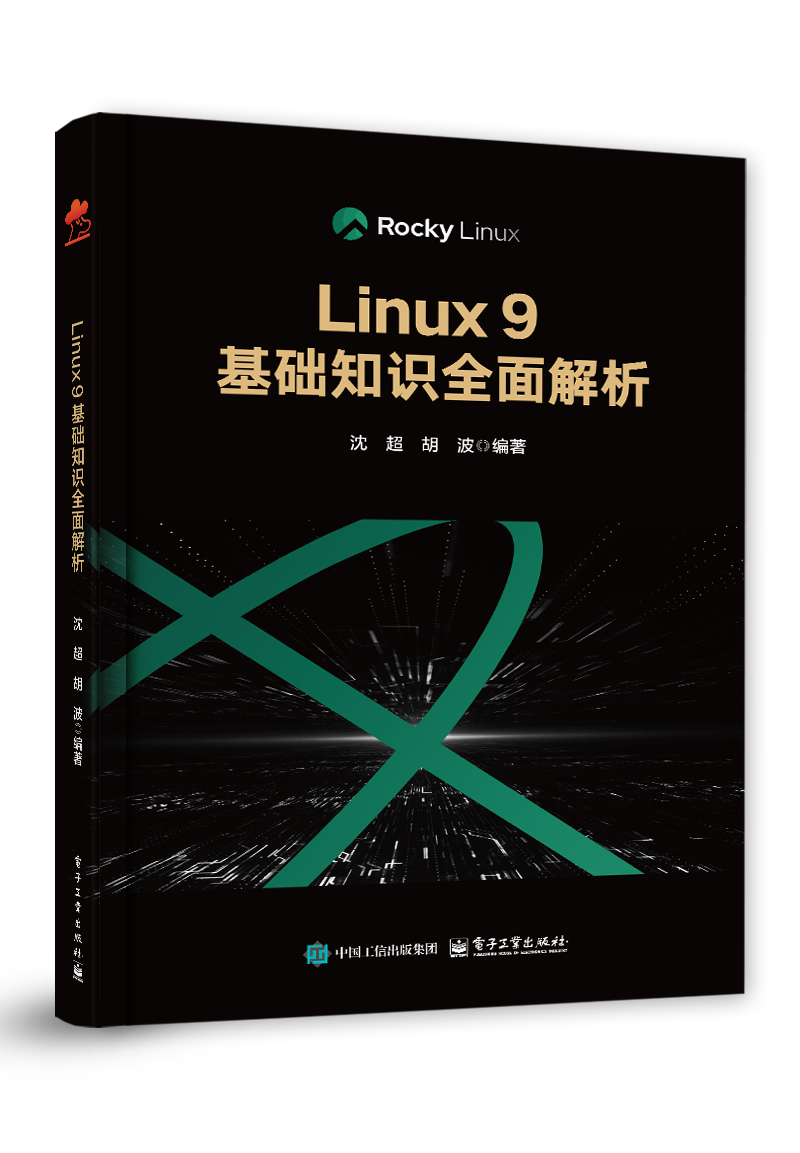财务会计和报告(英文注释版·第15版)
作 译 者:Barry Elliott等
出 版 日 期:2013-06-01
出 版 社:电子工业出版社
维 护 人:
书 代 号:G0205000
I S B N:9787121205002
图书简介:
本书旨在向读者呈现一个全面的会计准则体系及财务报告框架,以确保学生能够获得必要的会计学知识和技能。学生在对会计理论知识深入学习后不仅可以对当前的会计制度进行批判性的评价,还可以从基础理论的角度评估诸多改进性意见。本书主要包括:现行的国际会计准则(ISA)和国际财务报告准则(IFRS);公开报告中截选的会计案例;提纲挈领的复习题;不同难度的练习题;丰富的参考文献。
定价 69.0
您的专属联系人更多

联系人:王二华
电话:010-88254532
邮箱:wangrh@phei.com.cn
-
配 套 资 源图书特别说明:
本书资源
本书暂无资源会员上传本书资源
-
图 书 内 容
内容简介
本书旨在向读者呈现一个全面的会计准则体系及财务报告框架,以确保学生能够获得必要的会计学知识和技能。学生在对会计理论知识深入学习后不仅可以对当前的会计制度进行批判性的评价,还可以从基础理论的角度评估诸多改进性意见。本书主要包括:现行的国际会计准则(ISA)和国际财务报告准则(IFRS);公开报告中截选的会计案例;提纲挈领的复习题;不同难度的练习题;丰富的参考文献。图书详情
ISBN:9787121205002开 本:16开页 数:548字 数:877本书目录
Full contents Part 1 Preparation of financial statements Chapter 1 Accounting and reporting on a cash flow basis 2 1.1 Introduction 2 1.2 Shareholders 2 1.3 What skills does an accountant require in respect of external reports? 3 1.4 Managers 3 1.5 What skills does an accountant require in respect of internal reports? 3 1.6 Procedural steps when reporting to internal users 4 1.7 Agency costs2 6 1.8 Illustration of periodic financial statements prepared under the cash flow concept to disclose realised operating cash flows 6 1.9 Illustration of preparation of statement of financial position 10 1.10 Treatment of noncurrent assets in the cash flow model 11 1.11 What are the characteristics of these data that make them reliable? 12 1.12 Reports to external users 12 Summary 13 Review questions 14 References 14 Chapter 2 Accounting and reporting on an accrual accounting basis 15 2.1 Introduction 15 2.2 Historical cost convention 16 2.3 Accrual basis of accounting 16 2.4 Mechanics of accrual accounting adjusting cash receipts and payments 17 2.5 Subjective judgements required in accrual accountingadjusting cash payments in accordance with the matching principle 17 2.6 Mechanics of accrual accountingthe statement of financial position 18 2.7 Reformatting the statement of financial position 18 2.8 Accounting for the sacrifice of noncurrent assets 19 2.9 Reconciliation of cash flow and accrual accounting data 22 Summary 23 Review questions 24 References 24 Chapter 3 Preparation of financial statements 25 3.1 Introduction 25 3.2 Preparing an internal statement of income from a trial balance 25 3.3 The format of statements of income for publication 27 3.4 Other comprehensive income 29 3.5 Accounting for current tax 31 3.6 Presentation using IAS 1 Alternative method (Format 2) 32 3.7 The statement of financial position 33 3.8 Statement of changes in equity 33 3.9 The accounting rules for asset valuation 34 3.10 The explanatory notes that accompany a statement of financial position 35 3.11 Has prescribing the formats meant that identical transactions are reported identically? 37 3.12 What does an investor need in addition to the financial statements to make decisions? 39 3.13 ASB review of narrative reporting 44 3.14 What is meant by a fair view? 44 Summary 46 Review questions 46 References 47 Chapter 4 Annual Report: additional financial statements 48 4.1 Introduction 48 4.2 The value added by segment reports 48 4.3 Detailed review and evaluation of IRFS 8Operating Segments1 49 4.4 IFRS 5meaning of ‘held for sale’ 55 4.5 IFRS 5implications of classification as held for sale 56 4.6 Meaning and disclosure of ‘discontinued operations’ 56 4.7 IAS 10events after the reporting period4 58 4.8 Related party disclosures 59 Summary 62 Review questions 63 References 63 Chapter 5 Statements of cash flows 64 5.1 Introduction 64 5.2 Development of statements of cash flows 64 5.3 Applying IAS 7 (revised) Statements of Cash Flows 66 5.4 Step approach to preparation of a statement of cash flowsindirect method 68 5.5 Statement of cash flowsdirect method 70 5.6 Additional notes required by IAS 7 70 5.7 Analysing statements of cash flows 71 5.8 Critique of cash flow accounting 75 5.9 Summary proposal for change in presentation of the financial statements 75 Summary 77 Review questions 77 References 78 Part 2 Income and asset value measurement systems Chapter 6 Income and asset value measurement: an economist’s approach 80 6.1 Introduction 80 6.2 Role and objective of income measurement 80 6.3 Accountant’s view of income, capital and value 82 6.4 Critical comment on the accountant’s measure 85 6.5 Economist’s view of income, capital and value 86 6.6 Critical comment on the economist’s measure 91 6.7 Income, capital and changing price levels 91 Summary 93 Review questions 93 References 94 Bibliography 94 Chapter 7 Accounting for pricelevel changes 95 7.1 Introduction 95 7.2 Review of the problems of historical cost accounting (HCA) 95 7.3 Inflation accounting 95 7.4 The concepts in principle 96 7.5 The four models illustrated for a company with cash purchases and sales 97 7.6 Critique of each model 100 7.7 Operating capital maintenance a comprehensive example 103 7.8 Critique of CCA statements 112 7.9 The ASB approach 113 7.10 The IASC/IASB approach 115 7.11 Future developments 116 Summary 118 Review questions 118 References 118 Bibliography 119 Chapter 8 Revenue recognition 120 8.1 Introduction 120 8.2 The issues 120 8.3 The challenge 121 8.4 Revenue definedIAS 18 Revenue 121 8.5 Proposed IFRS 124 Summary 128 Review questions 129 References 130 Part 3 Regulatory framework – an attempt to achieve uniformity Chapter 9 Financial reportingevolution of global standards 132 9.1 Introduction 132 9.2 Why do we need financial reporting standards? 132 9.3 Why do we need standards to be mandatory? 133 9.4 Arguments in support of standards 134 9.5 Arguments against standards 135 9.6 Standard setting and enforcement in the UK under the Financial Reporting Council (FRC) 135 9.7 The Accounting Standards Board (ASB) 136 9.8 The Financial Reporting Review Panel (FRRP) 136 9.9 Standard setting and enforcement in the US 137 9.10 Why have there been differences in financial reporting? 139 9.11 Efforts to standardise financial reports 143 9.12 What is the impact of changing to IFRS? 145 9.13 Progress towards adoption by the USA of international standards 146 9.14 Advantages and disadvantages of global standards for publicly accountable entities 147 9.15 How do reporting requirements differ for nonpublicly accountable entities? 148 9.16 Does the need for standards and effective enforcement still exist in the 21st century? 151 9.17 Move towards a conceptual framework 151 Summary 152 Review questions 152 References 153 Chapter 10 Conceptsevolution of a global conceptual framework 155 10.1 Introduction 155 10.2 Historical overview of the evolution of financial accounting theory 156 10.3 FASB Concepts Statements 159 10.4 IASC Framework for the Preparation and Presentation of Financial Statements 162 10.5 ASB Statement of Principles 19999 163 10.6 Conceptual framework developments 170 Summary 171 Review questions 173 References 173 Chapter 11 Ethical behaviour and implications for accountants 175 11.1 Introduction 175 11.2 The meaning of ethical behaviour 175 11.3 The accounting standard setting process and ethics 176 11.4 The IFAC Code of Ethics for Professional Accountants 177 11.5 Implications of ethical values for the principles versus rulesbased approaches to accounting standards 179 11.6 Ethics in the accountants’ work environmenta research report 182 11.7 Implications of unethical behaviour for stakeholders using the financial reports 183 11.8 The increasing role of whistle blowing 188 11.9 The role of financial reporting authorities 189 11.10 Why should students learn ethics? 191 Summary 192 Review questions 193 References 195 Part 4 Statement of financial positionequity, liability and asset measurement and disclosure Chapter 12 Share capital, distributable profits and reduction of capital 198 12.1 Introduction 198 12.2 Common themes 198 12.3 Total owners’ equity: an overview 199 12.4 Total shareholders’ funds: more detailed explanation 200 12.5 Accounting entries on issue of shares 203 12.6 Creditor protection: capital maintenance concept 204 12.7 Creditor protection: why capital maintenance rules are necessary 204 12.8 Creditor protection: how to quantify the amounts available to meet creditors’ claims 205 12.9 Issued share capital: minimum share capital 205 12.10 Distributable profits: general considerations 206 12.11 Distributable profits: how to arrive at the amount using relevant accounts 207 12.12 When may capital be reduced? 208 12.13 Writing off part of capital which has already been lost and is not represented by assets 208 12.14 Repayment of part of paidin capital to shareholders or cancellation of unpaid share capital 213 12.15 Purchase of own shares 213 Summary 215 Review questions 216 References 216 Chapter 13 Liabilities 217 13.1 Introduction 217 13.2 Provisionstheir impact on the statement of financial position 217 13.3 ED IAS 37 Nonfinancial Liabilities 225 13.4 ED/2010/1 Measurement of Liabilities in IAS 37 231 Summary 231 Review questions 231 References 232 Chapter 14 Financial instruments 233 14.1 Introduction 233 14.2 Financial instrumentsthe IASB’s problem child 233 14.3 IAS 32 Financial Instruments: Disclosure and Presentation1 235 14.4 IAS 39 Financial Instruments: Recognition and Measurement 240 14.5 IFRS 7 Financial Statement Disclosures6 249 14.6 Financial instruments developments 253 Summary 255 Review questions 256 References 256 Chapter 15 Employee benefits 257 15.1 Introduction 257 15.2 Greater employee interest in pensions 257 15.3 Financial reporting implications 258 15.4 Types of scheme 258 15.5 Defined contribution pension schemes 260 15.6 Defined benefit pension schemes 260 15.7 IAS 19 (revised) Employee Benefits 261 15.8 The liability for pension and other postretirement costs 261 15.9 The statement of comprehensive income 264 15.10 Comprehensive illustration 264 15.11 Plan curtailments and settlements 266 15.12 Multiemployer plans 266 15.13 Disclosures 267 15.14 Other longservice benefits 267 15.15 Shortterm benefits 268 15.16 Termination benefits8 268 15.17 Exposure draft of amendments to IAS 19 269 15.18 IFRS 2 ShareBased Payment 270 15.19 Scope of IFRS 2 271 15.20 Recognition and measurement 271 15.21 Equitysettled sharebased payments 271 15.22 Cashsettled sharebased payments 274 15.23 Transactions which may be settled in cash or shares 275 15.24 IAS 26 Accounting and Reporting by Retirement Benefit Plans 275 Summary 277 Review questions 278 References 278 Chapter 16 Taxation in company accounts 279 16.1 Introduction 279 16.2 Corporation tax 279 16.3 Corporation tax systemsthe theoretical background 280 16.4 Corporation tax systemsavoidance and evasion 281 16.5 Corporation taxthe system from 6 April 1999 283 16.6 IFRS and taxation 285 16.7 IAS 12accounting for current taxation 286 16.8 Deferred tax 287 16.9 FRS 19 (the UK standard on deferred taxation) 294 16.10 A critique of deferred taxation 295 16.11 Examples of companies following IAS 12 298 16.12 Value added tax (VAT) 299 Summary 299 Review questions 300 References 300 Chapter 17 Property, plant and equipment (PPE) 302 17.1 Introduction 302 17.2 PPEconcepts and the relevant IASs and IFRSs 302 17.3 What is PPE? 303 17.4 How is the cost of PPE determined? 303 17.5 What is depreciation? 305 17.6 What are the constituents in the depreciation formula? 308 17.7 How is the useful life of an asset determined? 308 17.8 Residual value 309 17.9 Calculation of depreciation 309 17.10 Measurement subsequent to initial recognition 313 17.11 IAS 36 impairment of assets 315 17.12 IFRS 5 noncurrent assets held for sale and discontinued operations 320 17.13 Disclosure requirements 321 17.14 Government grants towards the cost of PPE 321 17.15 Investment properties 323 17.16 Effect of accounting policy for PPE on the interpretation of the financial statements 324 Summary 326 Review questions 326 References 327 Chapter 18 Leasing 328 18.1 Introduction 328 18.2 Background to leasing 328 18.3 Why was the IAS 17 approach so controversial? 330 18.4 IAS 17classification of a lease 331 18.5 Accounting requirements for operating leases 332 18.6 Accounting requirements for finance leases 333 18.7 Example allocating the finance charge using the sum of The digits method 333 18.8 Accounting for the lease of land and buildings 337 18.9 Leasinga form of off balance sheet financing 338 18.10 Accounting for leasesa new approach 339 18.11 Accounting for leases by lessors 341 Summary 342 Review questions 342 References 343 Chapter 19 R&D; goodwill; intangible assets and brands 344 19.1 Introduction 344 19.2 Accounting treatment for research and development 344 19.3 Research and development 344 19.4 Why is research expenditure not capitalised? 345 19.5 Capitalising development costs 346 19.6 The judgements to be made when deciding whether to capitalise development costs 347 19.7 Disclosure of R&D 348 19.8 IFRS for SMEs 348 19.9 Goodwill 349 19.10 The accounting treatment of goodwill 349 19.11 Critical comment on the various methods that have been used to account for goodwill 350 19.12 Negative goodwill 353 19.13 Intangible assets 353 19.14 Brand accounting 356 19.15 Justifications for reporting all brands as assets 357 19.16 Accounting for acquired brands 358 19.17 Emissions trading 359 19.18 Intellectual property 361 19.19 Review of implementation of IFRS 3 364 Summary 366 Review questions 366 References 368 Chapter 20 Inventories 370 20.1 Introduction 370 20.2 Inventory defined 370 20.3 The controversy 370 20.4 IAS 2 Inventories 372 20.5 Inventory valuation 372 20.6 Workinprogress 378 20.7 Inventory control 380 20.8 Creative accounting 380 20.9 Audit of the yearend physical inventory count 383 20.10 Published accounts 384 20.11 Agricultural activity 385 Summary 388 Review questions 388 References 389 Chapter 21 Construction contracts 390 21.1 Introduction 390 21.2 The need to replace IAS 11 Construction Contracts1 390 21.3 Identification of contract revenue 391 21.4 Identification of contract costs 392 21.5 Proposed new accounting rules 393 21.6 Approach when a contract can be separated into components 394 21.7 Accounting for a contract 395 21.8 Illustratedprofitable contract using step approach 396 21.9 Illustratedlossmaking contract using step approach 398 21.10 Developments in accounting for revenue 398 21.11 Publicprivate partnerships (PPPs) 399 Summary 405 Review questions 406 References 406 Part 5 Consolidated accounts Chapter 22 Accounting for groups at the date of acquisition 408 22.1 Introduction 408 22.2 The definition of a group 408 22.3 Consolidated accounts and some reasons for their Preparation 408 22.4 The definition of control 410 22.5 Alternative methods of preparing consolidated accounts 411 22.6 The treatment of positive goodwill 413 22.7 The treatment of negative goodwill 413 22.8 The comparison between an acquisition by cash and an exchange of shares 413 22.9 Noncontrolling interests 414 22.10 The treatment of differences between a subsidiary’s fair value and book value 416 22.11 How to calculate fair values 417 22.12 IFRS 10summary of significant revisions 418 Summary 418 Review questions 419 References 420 Chapter 23 Preparation of consolidated statements of financial position after the date of acquisition 421 23.1 Introduction 421 23.2 Preand postacquisition profits/ losses 421 23.3 Intercompany balances 423 23.4 Unrealised profit on intercompany sales 425 23.5 Provision for unrealised profit affecting a noncontrolling interest 429 23.6 Uniform accounting policies and reporting dates 429 23.7 How is the investment in subsidiaries reported in the parent’s own statement of financial position? 429 Summary 429 Review questions 429 References 430 Chapter 24 Preparation of consolidated statements of comprehensive income, changes in equity and cash flows 431 24.1 Introduction 431 24.2 Preparation of a consolidated statement of comprehensive incomethe Ante Group 431 24.3 The statement of changes in equity (SOCE)3 433 24.4 Other consolidation adjustments 434 24.5 Dividends or interest paid by the subsidiary out of preacquisition profits 435 24.6 A subsidiary acquired part of the way through the year 435 24.7 Published format statement of comprehensive income 437 24.8 Consolidated statements of cash flows 438 Summary 439 Review questions 439 References 439 Chapter 25 Accounting for associates and joint ventures 440 25.1 Introduction 440 25.2 Definitions of associates and of significant influence 440 25.3 The treatment of associated companies in consolidated Accounts 440 25.4 The Brill Groupthe equity method illustrated 441 25.5 The treatment of provisions for unrealised profits 443 25.6 The acquisition of an associate partway through the year 443 25.7 Joint arrangements 444 Summary 446 Review questions 447 References 447 Chapter 26 Accounting for the effects of changes in foreign exchange rates under IAS 21 449 26.1 Introduction 449 26.2 The difference between conversion and translation and the definition of a foreign currency transaction 449 26.3 The functional currency 449 26.4 The presentation currency5 450 26.5 Monetary and nonmonetary items 450 26.6 The rules on the recording of foreign currency transactions carried out directly by the reporting entity 450 26.7 The treatment of exchange differences on foreign currency transactions 451 26.8 Foreign exchange transactions in the individual accounts of companies illustratedBoil plc 451 26.9 The translation of the accounts of foreign operations where the functional currency is the same as that of the parent 452 26.10 The use of a presentation currency other than the functional currency 453 26.11 Granby Ltd illustration 454 26.12 Granby Ltd illustration continued 455 26.13 Implications of IAS 21 457 26.14 Critique of use of presentation currency 457 Summary 457 Review questions 458 References 458 Part 6 Interpretation Chapter 27 Earnings per share 460 27.1 Introduction 460 27.2 Why is the earnings per share figure important? 460 27.3 How is the EPS figure calculated? 461 27.4 The use to shareholders of the EPS 462 27.5 Illustration of the basic EPS calculation 463 27.6 Adjusting the number of shares used in the basic EPS calculation 463 27.7 Rights issues 466 27.8 Adjusting the earnings and number of shares used in the diluted EPS calculation 470 27.9 Procedure where there are several potential dilutions 472 27.10 Exercise of conversion rights during financial year 473 27.11 Disclosure requirements of IAS 33 473 27.12 The Improvement Project 475 27.13 Convergence project 476 Summary 476 Review questions 476 References 478 Chapter 28 Review of financial ratio analysis 479 28.1 Introduction 479 28.2 Initial impressions 479 28.3 What are accounting ratios? 480 28.4 Revision of key ratios 481 28.5 Key ratios for JD Wetherspoon 483 28.6 Comment on the current ratio 485 28.7 Interpreting the key ratiosJD Wetherspoon 486 28.8 Description of subsidiary ratios 488 28.9 Limitations of ratio analysis 497 28.10 Earnings before interest, tax, depreciation and amortization (EBITDA) used for management control purposes 500 Summary 501 Review questions 501 References 502 Chapter 29 Analytical analysisselective use of ratios 503 29.1 Introduction 503 29.2 Improvement of information for shareholders 503 29.3 Disclosure of risks and focus on relevant ratios 505 29.4 Shariah compliant companieswhy ratios are important 511 29.5 Ratios set by lenders in debt covenants 513 29.6 Predicting corporate failure 515 29.7 Performance related remuneration shareholder returns 521 29.8 Valuing shares of an unquoted companyquantitative process 524 29.9 Professional risk assessors 528 Summary 530 Review questions 531 References 531展开前 言
前 言 本书旨在向读者呈现一个全面的会计准则体系及财务报告框架,以确保学生能够获得必要的会计学知识和技能。学生在对会计理论知识深入学习后不仅可以对当前的会计制度进行批判性的评价,还可以从基础理论的角度评估诸多改进性意见。本书主要包括: (1)现行的国际会计准则(ISA)和国际财务报告准则(IFRS); (2)公开报告中截选的会计案例; (3)提纲挈领的复习题; (4)不同难度的练习题; (5)丰富的参考文献。 我们假设本书的使用者具备基本的财务会计知识,正文和习题也是基于这一假设而编写的。为了使会计初学者也能够理解书中所讲内容,我们在第一部分“编制财务报表”中通俗地对会计学基础进行了讲解,以帮助那些没有会计学基础的读者学习。 本书提供了足够的广度和深度以满足不同阶段读者的需求。教师可以使用本书来完成本科二年级、最后一年以及研究生阶段的一系列教学计划。 以下课程均划分为财务会计模块和报告分析模块: (1)会计、工商管理和经济学方向本科二年级学生的课程; (2)会计、工商管理和经济学方向本科最后一年学生的课程; (3)MBA课程; (4)专业学位硕士课程; (5)为学生进行专业性会计考试而开设的课程。 第14版的变动 会计准则 2005年1月英国上市公司和非上市公司已申请采用国际准则。 非上市公司继续采用英国公认会计原则,会计准则理事会(ASB)承诺英国公认会计原则将逐步与国际标准接轨。 目前公司使用的小企业财务报告准则将会继续使用下去。2009年国际会计准则理事会(IASB)为中小型企业(SME)发布了相关的国际财务报告准则(IFRS)。 会计准则——第15版的更新 第9章和第10章涵盖了全球标准的演变和一个全球性的概念框架。 本书所涉及的主题和国际准则列示如下: 第3章 编制财务报表 国际会计准则(IAS)第1号 第4章 编制财务报表附注 国际会计准则第10号和第24号 国际财务报告准则(IFRS)第10号和第8号 第5章 现金流量表 国际会计准则第7号 第7章 物价变动会计 国际会计准则第29号 第13章 负债 国际会计准则第37号 第14章 金融工具 国际会计准则第32号和第39号 国际财务报告准则第7号和第9号 第15章 员工福利 国际会计准则第19号和第26号 国际财务报告准则第2号 第16章 公司所得税 国际会计准则第12号 第17章 不动产、厂房和设备 国际会计准则第16号、第20号、第23号 第36号和第40号 国际财务报告准则第5号 第18章 租赁 国际会计准则第17号 第19章 研发、商誉、无形资产和品牌 国际会计准则第38号 国际财务报告准则第3号 第20章 存货 国际会计准则第2号 第21章 创建合同 国际会计准则第11号 第22~26章 企业合并 国际会计准则第21号、第28号 国际财务报告准则第3号、第10号、第11号和第12号 第27章 每股收益 国际会计准则第33号 财务报表的编制 第1章和第2章涵盖了以权责发生制为基础的现金流的会计计量和报告。第3~5章包括了利润表、资产负债表和现金流量表的编制。 收入及资产价值的计量 第6章和第7章分别介绍了衡量经济收入的方法、物价变动会计。第8章介绍了国际会计准则理事会关于收入确认的建议。 英国的监管框架及其分析 英国上市公司将继续受到本国公司法的监管,以达到诸如经营和财务审查、英国企业公司治理准则的要求。 英国的监管框架及其分析——第15版的变动 下列章节被酌情保留和更新: 第11章 道德行为及对会计师的意义 第12章 股本、可分配利润和减少股本 第13章 资产负债表外融资,现改名为负债 第28章 回顾财务比率分析 第29章 解析财务分析——如何选择使用财务比率 本书的内容坚持以时俱进,响应读者的建设性意见。 最新发展 一方面,监管机构正采取措施向国际财务会计报告准则趋同。此举得到了广泛的支持。另一方面,在美国和欧洲地区近年来时有爆出会计丑闻和不断增长的高管薪酬似乎并未与公司业绩之间呈现明显的相关关系而致股东们怨气积聚的背景下,监管机构还需更多考虑公司治理问题。 编制者、利益相关者、审计师、学者和准则制定者会继续对财务报告的内容进行探讨,这反映了理论和实践之间仍存在紧张关系。 编制者倾向于使用历史成本来编制报告,但这不能为股东提供评价过去业绩或是预测未来赢利的相关信息; 股东倾向于可预计未来股利及资本增长或可预计对环境和社会造成影响的前瞻性报告; 利益相关者倾向于量化的信息,以披露对环境和社会造成的影响,并采取措施减少负面影响; 审计师倾向于可验证的财务报告,以便审核数字,避免在未来发现数字错误; 会计学者倾向于财务报告能反映会计实质,并且能够提供评估管理绩效和评价公司适应能力的相关信息; 准则制定者倾向于会计学者的观点,认为财务报告要基于交易的商业实质。 为了更好地理解理论和实践存在的紧张关系,学生需要: 掌握依据历史成本和现实成本惯例编制财务报告的技能,这两种方法都出现在年度财务报告中; 了解强制性准则和自愿性准则的要点; 了解灵活编制财务报告对赢利及资产负债表中数字的影响程度; 了解财务报告在描述经济实质时的局限性; 在时间允许的情况下,了解原始材料以及其他已公布的材料。 教学手册 本书提供的教学手册包括了所有习题答案和高质量的幻灯片。授课教师只要向出版商提出申请,便可免费获得该手册(请在华信教育资源网上注册申请,另本书大量的习题可在该网站直接下载)。教师可以在网站上下载电子版的教学手册,下载地址是www.pearsoned.co.uk/elliott-elliott。展开作者简介
本书暂无作者简介 -
样 章 试 读本书暂无样章试读!
-
图 书 评 价 我要评论
